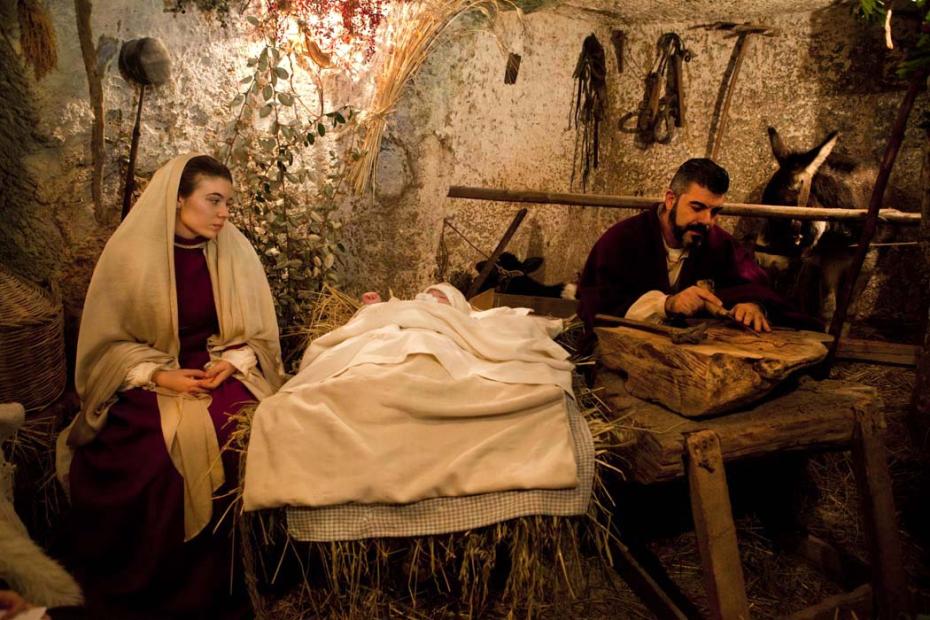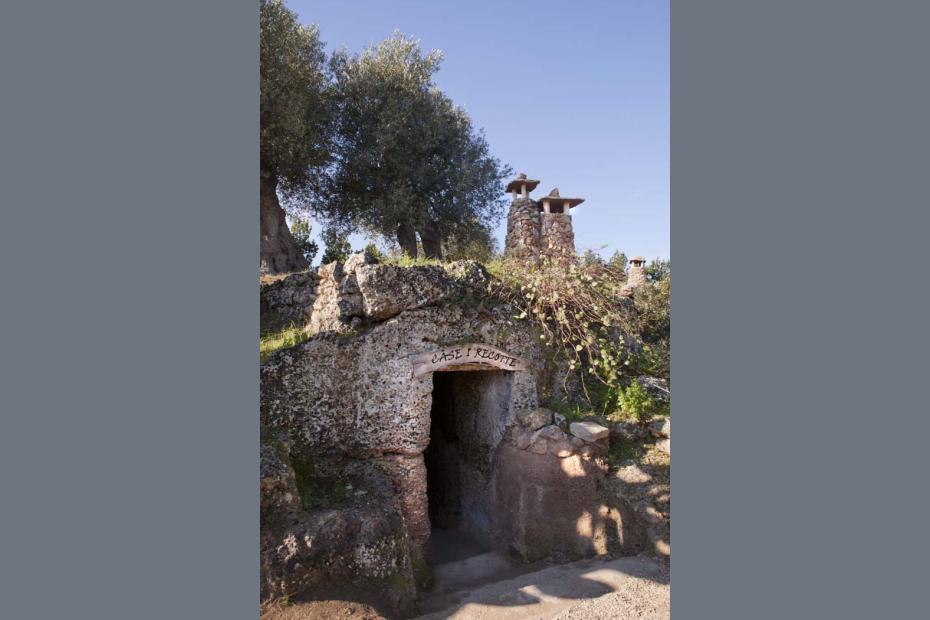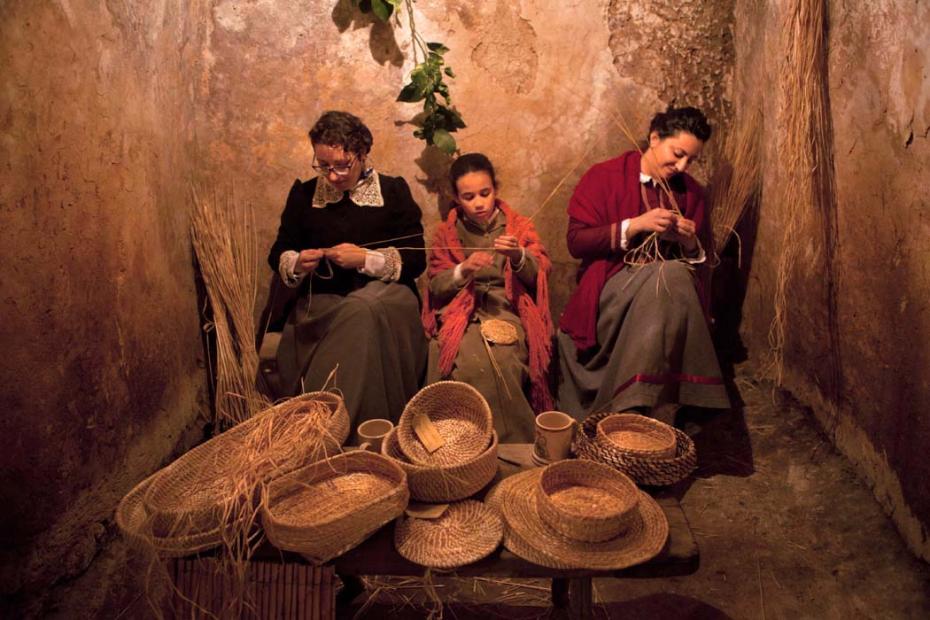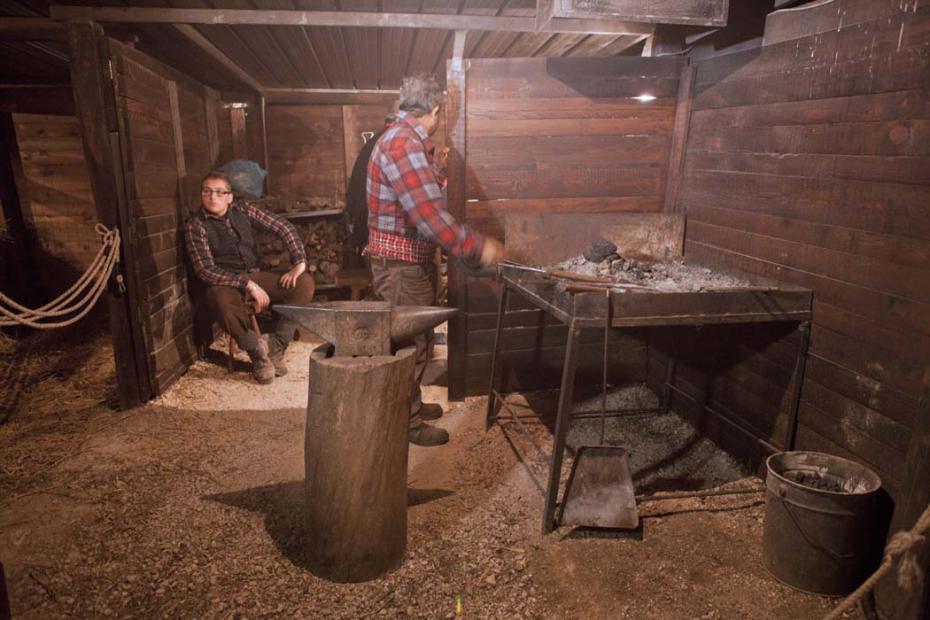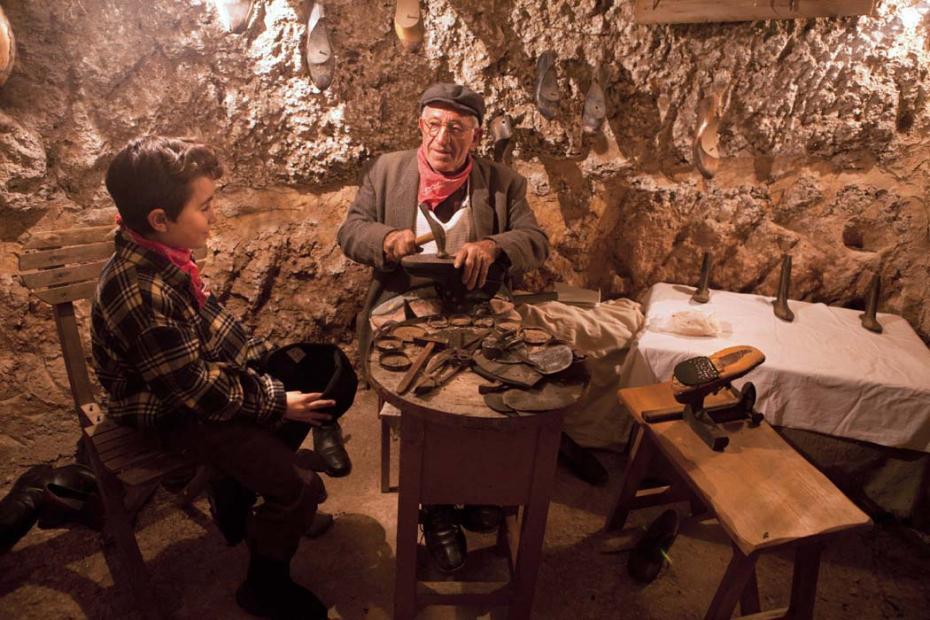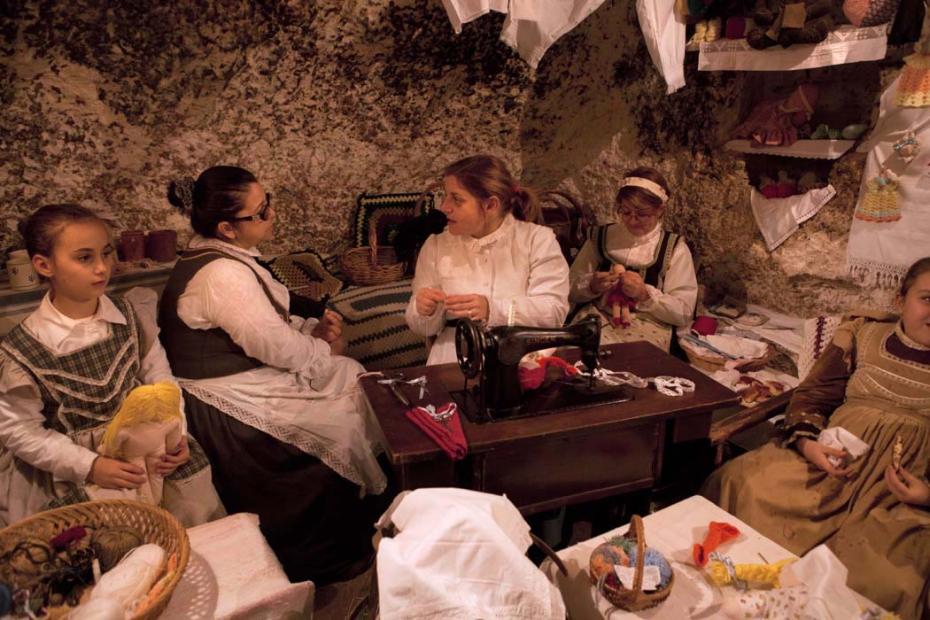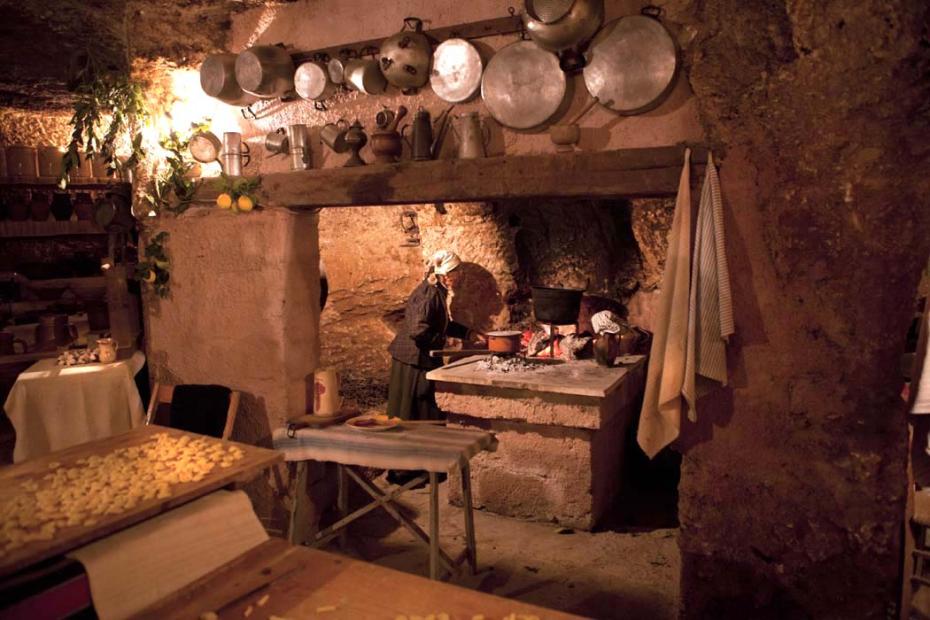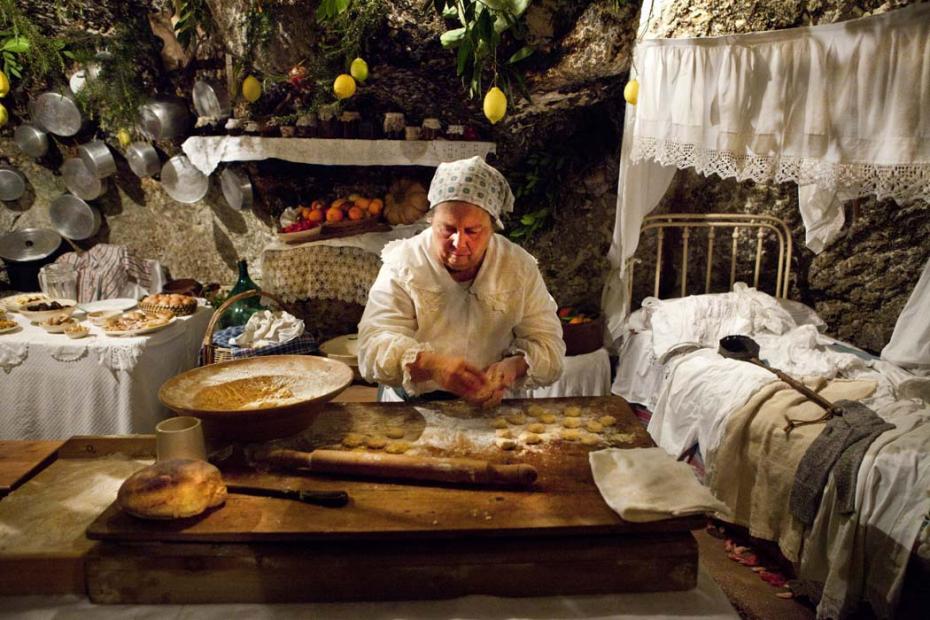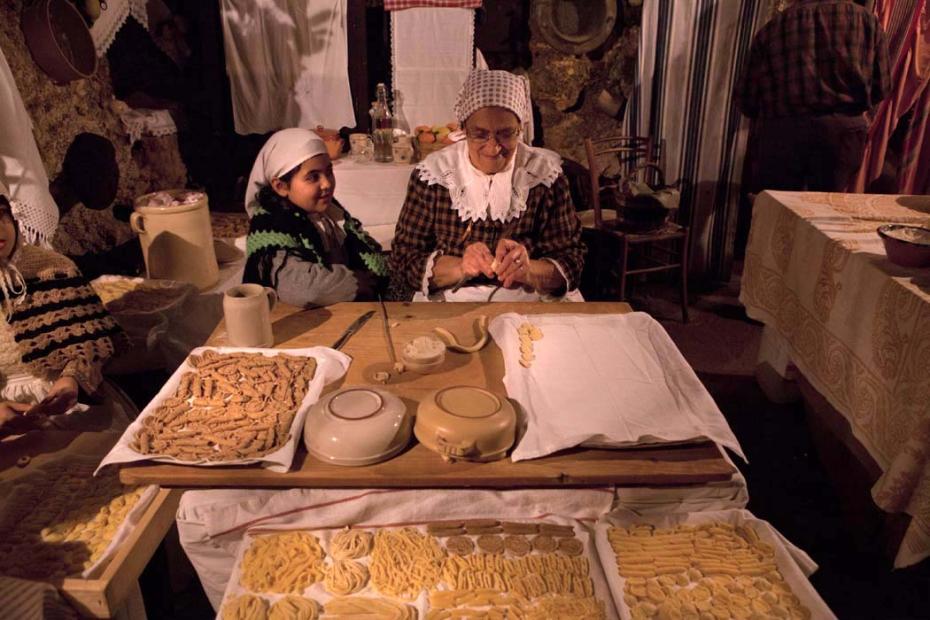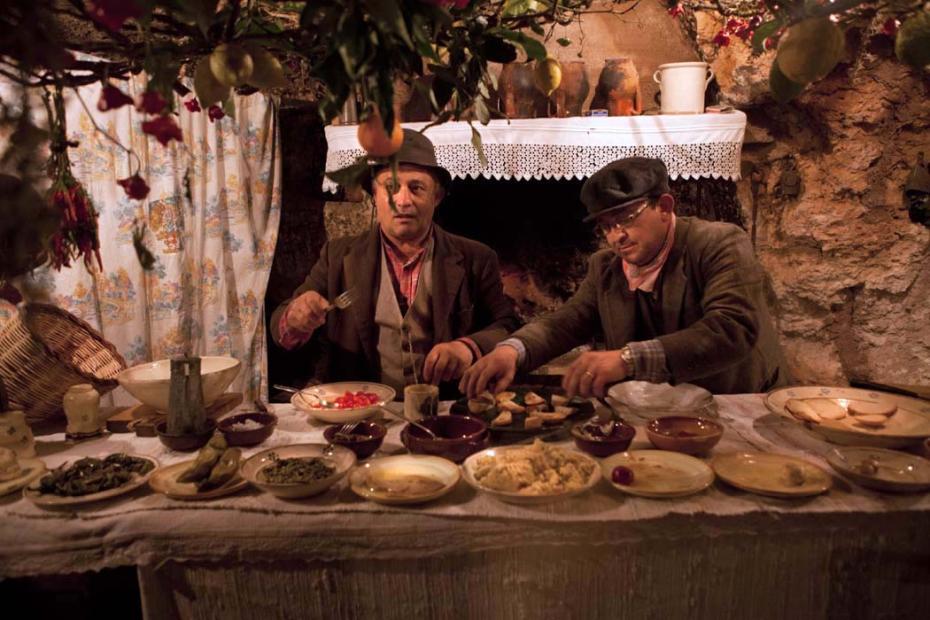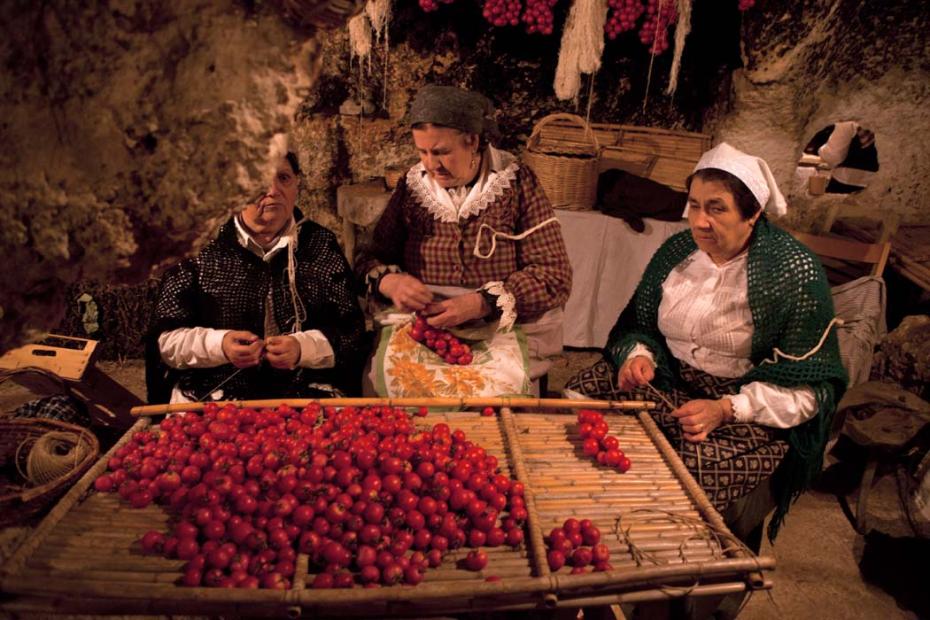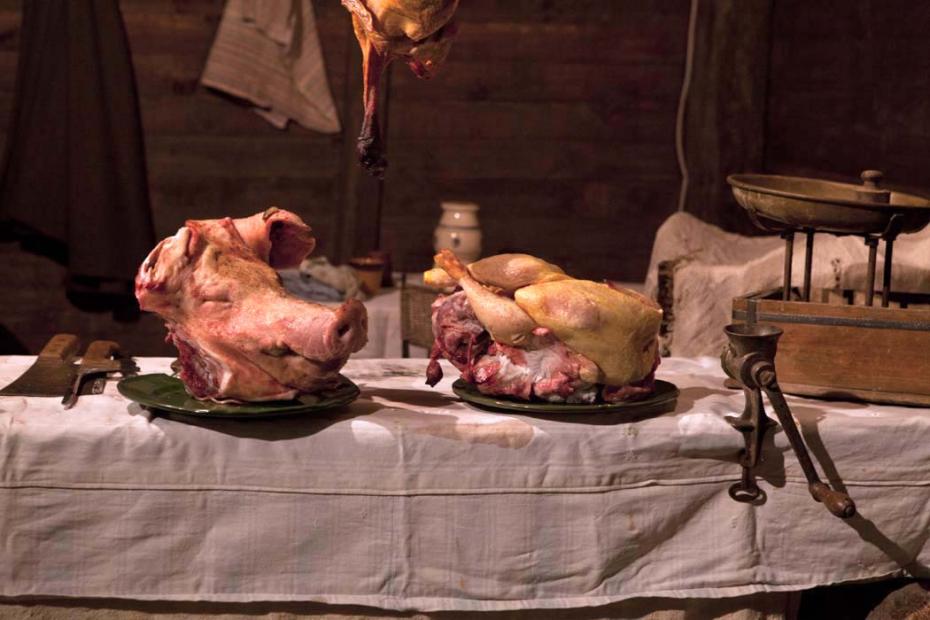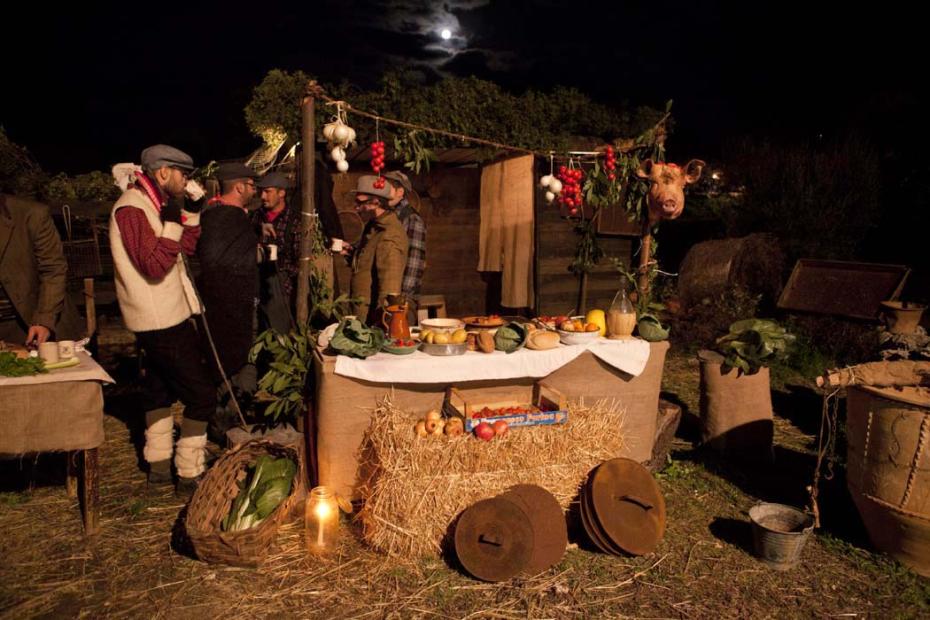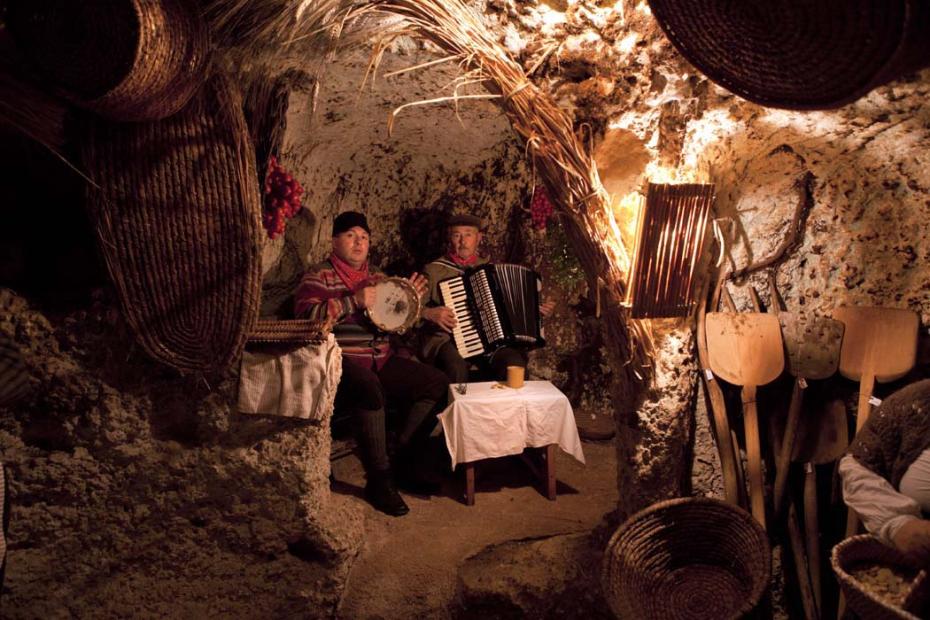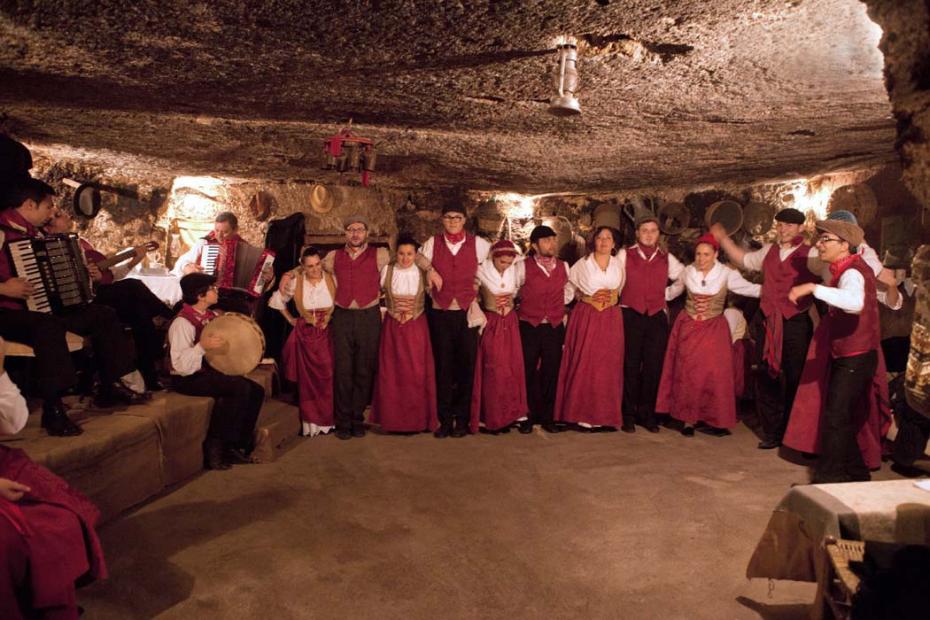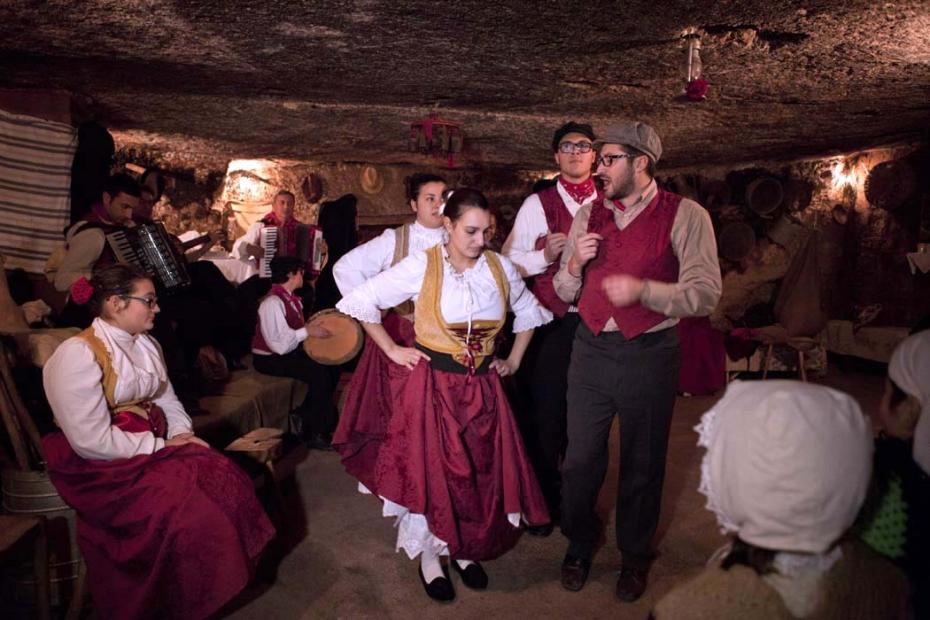Christmas celebrations might include a tour of a local presepe vivente, a theatrical reenactment of the nativity story. Living nativities take place all over Italy and attract thousands of visitors. Some viventi reenact life in ancient Palestine, while others set the Nativity locally. In Greccio, busloads of visitors wind up the hill to the site where St. Francis performed what is often considered to have been the first nativity scene for the annual reenactment. In Lecce, a free bus takes families on a vivente tour of performances in regional towns — Taurisano and Gemini on one evening, Gallipoli and Otranto on another.
In Pezze di Greco, a town in Puglia, a vivente has been performed since 1988, staged in caves that were once inhabited by refugees from Egnazia. Reenacting early 20th-century life in the rupestrian settlement of Lama Trapetto, this vivente involves hundreds of local volunteers. Costumed performers prepare and offer visitors traditional foods — orecchiette, white beans, and olives. In one cave, teenagers dance the tarantella to the accordion, and in another, a pony relaxes after turning an olive press. Outdoor bonfires and crackling hearths in the caves warm the December chill. In this vivente, as in others, the final tableau is the Nativity, where the part of Jesus is played by the town’s newest resident. Ticket proceeds go to the local parish, Maria SS. Del Carmine.
One college-age performer says that she loves acting in the vivente, because it’s a chance to reconnect with her friends. For many visitors, the vivente tour serves as a holiday activity. For performers, it’s a communal ritual linking past with present and bringing the gospel story into the old neighborhood.
